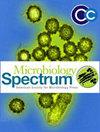QuantiFERON-TB Gold + CD8+ T细胞在结核病接触者和近期结核病感染中的应答
摘要
2016年,基于结核分枝杆菌特异性CD8+ T细胞在宿主对结核感染(TBI)反应中的作用,QuantiFERON-TB Gold Plus (QFT-Plus)取代了QuantiFERON-TB Gold in-tube (QFT-GIT),以提高检测灵敏度。除了QFT-GIT的TB抗原管(TB1管)外,QFT-Plus还包括第四管(TB2管)。TB2管含有早期秘书抗原6kda (ESAT-6)和培养滤液蛋白10 (CFP-10)的短肽,以刺激CD8+ T细胞,以及TB1管中含有的长肽。有证据表明结核分枝杆菌特异性CD8+ T细胞优先识别严重感染的细胞,这引起了人们对QFT-Plus CD8+ T细胞反应(以TB2-TB1干扰素γ [IFN-γ] >0.6 IU/mL作为CD8+反应的阈值)作为结核病和近期TBI的标志物的兴趣。我们回顾性分析了2018年1月至2018年10月在新加坡结核病接触者诊所筛查的接触者的QFT-Plus结果中的CD8+反应。我们发现,与所有其他TBI患者相比,结核病患者(28.8% vs 12.6%, P < 0.0001)和strict Converters患者(23.3% vs 12.6%, P < 0.0001)接触TB2-TB1 IFN-γ >0.6 IU/mL的比例显著高于其他TBI患者。与所有其他TBI患者相比,结核病患者(0.13 vs 0.06 IU/mL, P < 0.0001)和严格转换者(0.17 vs 0.06 IU/mL, P = 0.036)中位TB2-TB1 IFN-γ值也显着高于所有其他TBI患者。我们的研究结果进一步证明,QFT-Plus测定的CD8+反应可以预测结核病和最近的结核病感染。有证据表明结核分枝杆菌特异性CD8+ T细胞优先识别严重感染的细胞,这引起了人们对QuantiFERON-TB Gold Plus (QFT-Plus) CD8+ T细胞反应作为结核病(TB)疾病和近期TB感染标志物的兴趣。以TB2-TB1干扰素- γ >0.6 IU/mL作为CD8+反应的阈值,我们发现CD8+ T细胞反应与结核病和严格的QFT-Plus转换有关,在我国国家项目筛选的接触者队列中。这进一步证明了该标记物在确定将受益于进一步结核病调查的人群以及近期感染的结核病预防治疗候选者方面的潜在效用。The QuantiFERON-TB Gold Plus (QFT-Plus) replaced the QuantiFERON-TB Gold in-tube (QFT-GIT) in 2016 to increase assay sensitivity, based on the role of Mycobacterium tuberculosis-specific CD8+ T cells in the host response to tuberculosis infection (TBI). The QFT-Plus incorporates a fourth tube (TB2 tube) in addition to the TB antigen tube of the QFT-GIT (TB1 tube). The TB2 tube contains shorter peptides from early secretary antigenic 6 kDa (ESAT-6) and culture filtrate protein 10 (CFP-10) to stimulate CD8+ T cells as well as long peptides contained in the TB1 tube. Evidence that Mycobacterium tuberculosis-specific CD8+ T cells preferentially recognize heavily infected cells has generated interest in the QFT-Plus CD8+ T cell response (taking TB2-TB1 interferon-gamma [IFN-γ] >0.6 IU/mL as a threshold for CD8+ response) as a marker for TB disease and for recent TBI. We retrospectively analyzed the CD8+ responses in the QFT-Plus results of contacts screened at the Singapore TB Contact Clinic from January 2018 to October 2018. We found significantly higher proportions of contacts with TB2-TB1 IFN-γ >0.6 IU/mL among those with TB disease (28.8% vs 12.6%, P < 0.0001) and Stringent Converters (23.3% vs 12.6%, P < 0.0001) compared to All Others with TBI. Median TB2-TB1 IFN-γ values were also significantly higher in those with TB disease (0.13 vs 0.06 IU/mL, P < 0.0001) and Stringent Converters (0.17 vs 0.06 IU/mL, P = 0.036) compared to All Others with TBI. Our findings add to the evidence that the CD8+ response measured by the QFT-Plus assay may predict TB disease and recent TB infection.IMPORTANCEEvidence that Mycobacterium tuberculosis-specific CD8+ T cells preferentially recognize heavily infected cells has generated interest in the QuantiFERON-TB Gold Plus (QFT-Plus) CD8+ T cell response as a marker for tuberculosis (TB) disease and for recent TB infection. Taking TB2-TB1 interferon-gamma >0.6 IU/mL as a threshold for CD8+ response, we found CD8+ T cell response to be associated with TB disease and stringent QFT-Plus conversion in a cohort of contacts screened under our country's national program. This adds to the evidence for the potential utility of this marker to identify persons who would benefit from further investigations for TB disease and those with recent infection who would be candidates for TB preventive treatment.

 求助内容:
求助内容: 应助结果提醒方式:
应助结果提醒方式:


